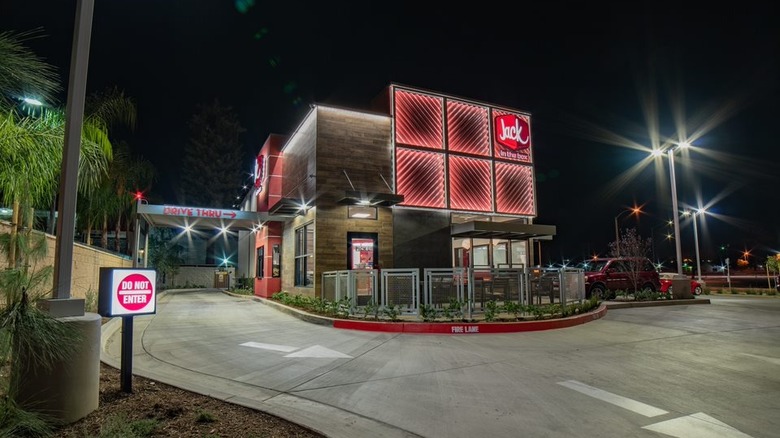How The Jack In The Box E. Coli Outbreak Changed The Way Food Recalls Work
It's an occasional blip you'd hear on the 5 o'clock news: a piece about a few hundred bags of lettuce that need to be recalled or maybe a couple thousand cans of tuna that need to be shipped back. Food recall stories may sound like background news in today's sensationalist headlines, but not long ago, the idea of unwittingly having — or worse, consuming — unsafe food products was something to get fired up about. Nowadays, we trust that agencies such as the USDA and FSIS are ensuring our food and drinks are not only delicious but safe to consume too.
A key player in the formation of our food safety system isn't actually a person at all. It's the West Coast-based fast-food chain Jack in the Box. Customers of Jack's expect to receive clean, hygienically made food — even if it may not be the healthiest choice nutrition-wise — and most of the time, they do receive your standard, safe-to-eat combo meal without any lasting consequences. But in 1993, in what is described as one of the worst outbreaks of all time (per Food Safety News), Jack in the Box sold undercooked burgers riddled with the E. coli O157: H7 bacteria to customers across California, Nevada, Washington, and Idaho. 700 customers were affected by the bacteria, with four children dying and another child having to undergo intense dialysis and removal of her large intestine to survive. In response, the USDA initiated a sweeping overhaul of meat inspection procedures to ensure such an outbreak never happens again.
The HACCP was formed to inspect meat better
Following the Jack in the Box E.coli outbreak in 1993, the USDA knew that there had to be a massive change to how meat and meat products were inspected. There already was a method for food inspection that would fit the USDA's recommendations known as HACCP — or the Hazard Analysis and Critical Control Points system. The origins of the HAACP were not rooted in the USDA, but instead in a cooperation between NASA, the United States military, and Pillsbury. The concept began with the goal of developing crumb-free, pathogen-free, and shelf-stable food for future space expeditions (per Safe Food Alliance). By targeting "critical failure areas" in food processing, safe, "sterile" food could be developed. Shortly after the success of the project, Pillsbury adopted the procedure into its own company following a recall on one of its products.
The Jack in the Box outbreak of 1993 was the tipping point. So important was the outbreak that Bill Clinton's cabinet discussed the matter at their first official meeting (per National Center for Biotechnology Information). The USDA implemented HACCP nationwide for all food processing facilities, while Jack in the Box quickly adopted the HACCP system itself, bringing on Dr. David Theno in 1993 (per PBS Frontline) to ensure that the company's products would only satisfy customers, not make them sick.

